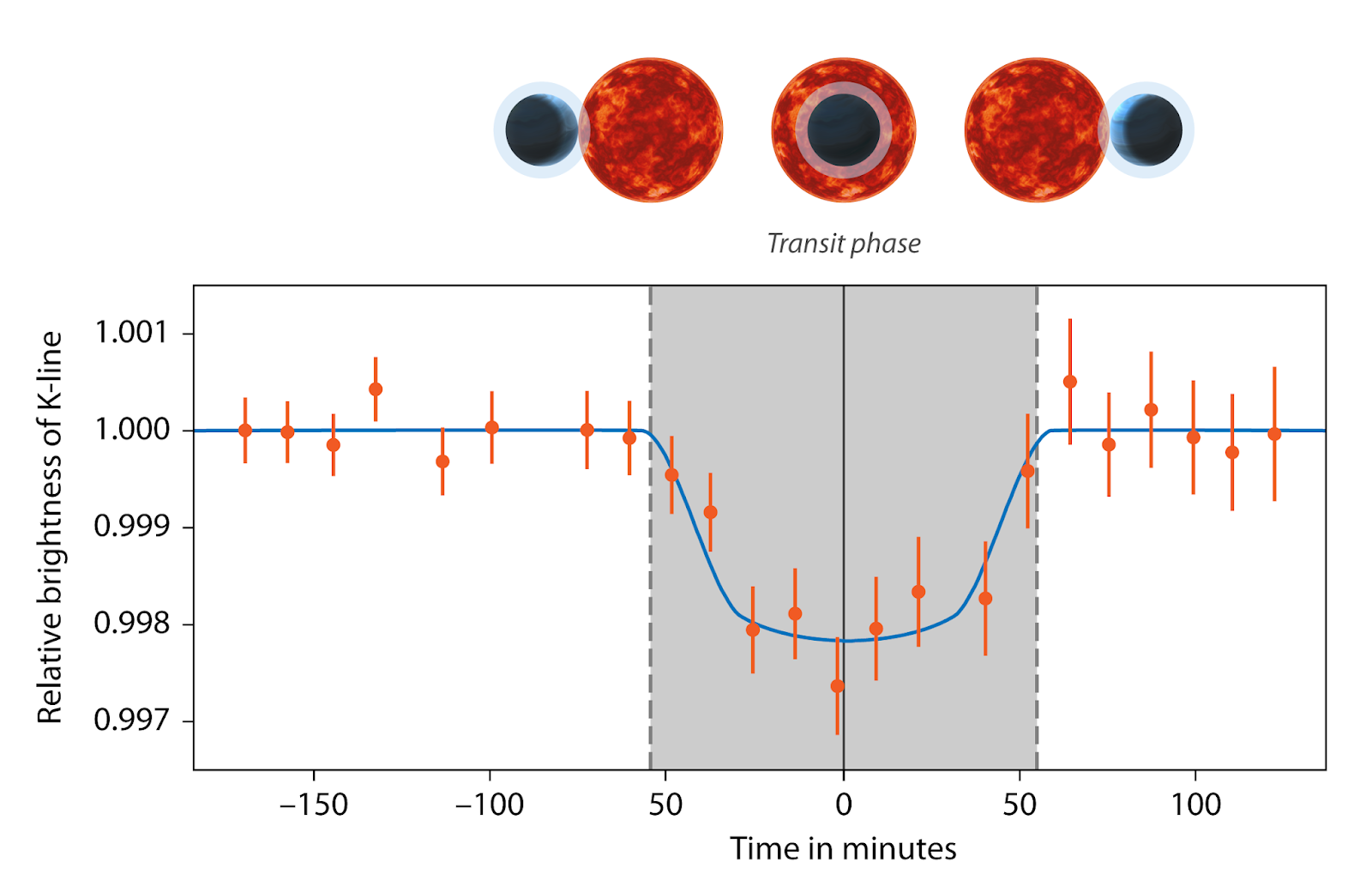Leibniz Institute for Astrophysics in Potsdam | Large Binocular Telescope Observatory | 2019 Sep 04
A team of astronomers led by AIP PhD student Engin Keles detected the chemical element potassium in the atmosphere of an exoplanet, for the first time with overwhelming significance and applying high-resolution spectroscopy. The Potsdam Echelle Polarimetric and Spectroscopic Instrument (PEPSI) at the Large Binocular Telescope (LBT) in Arizona was used to study the atmosphere on the Jupiter-like exoplanet HD 189733b.
- Potassium detection in HD189733b. The figure depitcts the excess absorption in the potassium line in the expoplanet’s atmosphere during transit. The horizontal axis shows the time in minutes, 0 means the exoplanet is at the central meridian near the middle of the stellar disk. Vertical dashed lines indicate the transit duration. The blue line shows the modelled planetary absorption. Credit: AIP/Engin Keles, Kristin Riebe
Ever since the earliest theoretical predictions 20 years ago, the chemical elements potassium and sodium were expected to be detectable in atmospheres of “hot jupiters”, gaseous planets with temperatures of a few thousand Kelvin that orbit closely around far-away stars. While sodium was detected with high resolution observations already early on, potassium was not, which created a puzzle for atmospheric chemistry and physics.
The elements can be discovered by analyzing the home star’s spectrum of light when the planet passes in front of it as seen from Earth. Different elements cause specific absorption signals in the spectrum, dark lines, that hint at the chemical composition of the atmosphere. However, the presence of clouds in hot Jupiter atmospheres strongly weakens any spectral absorption features and thus makes them very hard to detect. Even for HD 189733b, the best studied hot Jupiter, so far scientists only possessed a very vague and imprecise knowledge of the potassium absorption. The exoplanet, 64 light years away and about the size of Jupiter, orbits its home star – an active K dwarf – in 53 hours and is 30 times closer to it than the Earth to the Sun. It needed the light gathering capability of the 2x8,4m LBT and the high spectral resolution of PEPSI to definitely measure potassium for the first time at high resolution in atmospheric layers above the clouds. With these new measurements, researchers can now compare the absorption signals of potassium and sodium and thus learn more about processes such as condensation or photo-ionization in these exoplanet atmospheres. ...
The Potassium Absorption on HD 189733b and HD 209458b ~ Engin Keles et al
- Monthly Notices of the RAS: Letters 489(1):L37 (Oct 2019) DOI: 10.1093/mnrasl/slz123
HD 189733b:
- viewtopic.php?t=13293
- viewtopic.php?t=15140
- viewtopic.php?t=23129
- viewtopic.php?t=28806
- viewtopic.php?t=31711
- viewtopic.php?t=31831
- viewtopic.php?t=31876
- viewtopic.php?t=32004
- viewtopic.php?t=35364
- viewtopic.php?t=34656
